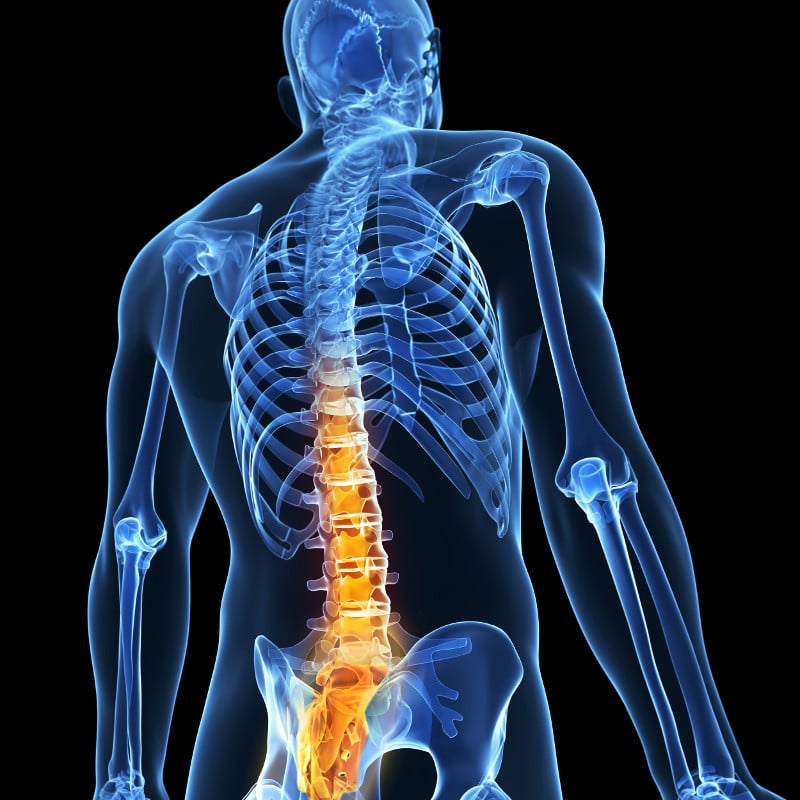
Patients with AS may experience stiffness and significant pain in the lower back and sacroiliac joints.4,5 Inflammatory back pain in AS generally worsens during periods of inactivity, especially at night, which can make it difficult for many patients to sleep well. In addition, morning stiffness lasting for at least 30 minutes is common in patients with AS.5 Extra-spinal involvement, including enthesitis, uveitis, dactylitis, inflammatory bowel disease, and psoriasis, may also occur in these patients.6,7 Uncontrolled disease can lead to bone growth and spinal fusion, further restricting range of motion and resulting in spinal curvature.5,6 If the rib and joints/costovertebral joint are involved, patients may also experience difficulty breathing.4,6 Symptoms of AS have a major impact on patients’ quality of life, with pain and stiffness limiting their ability to work, exercise, and socialize.6,8,9
Although historically considered a disease that almost exclusively affected men, AS is increasingly being recognized in women.10,11 Women with AS may experience disease differently than men, reporting more joint pain, more peripheral involvement, and worse quality of life than men.10,12 Women may also have a slower progression of radiographic damage vs men.13 For women with AS who become pregnant, approximately 60% report persistent or worsening disease activity during pregnancy, and about 90% experience a flare within 1 year of giving birth.14
1. Amarasekara DS, Yu J, Rho J. Bone Loss Triggered by the Cytokine Network in Inflammatory Autoimmune Diseases. J Immunol Res. 2015;2015:832127.
2. Helmick CG, Felson DT, Lawrence RC, et al. National Arthritis Data Workgroup. Estimates of the prevalence of arthritis and other rheumatic conditions in the United States. Part I. Arthritis Rheum. 2008;58(1):15-25.
3. U.S. and World Population Clock. United States Census Bureau website. Accessed July 25, 2018.
4. Sieper J, Rudwaleit M, Baraliakos X, et al. The Assessment of SpondyloArthritis international Society (ASAS) handbook: a guide to assess spondyloarthritis. Ann Rheum Dis. 2009;68 Suppl 2:ii1-44.
5. Braun J, Sieper J. Ankylosing spondylitis. Lancet. 2007;369(9570):1379-1390.
6. Boonen A, van der Linden SM. The burden of ankylosing spondylitis. J Rheumatol Suppl. 2006;78:4-11.
7. Rudwaleit M, van der Heijde D, Landewe R, et al. The development of Assessment of SpondyloArthritis international Society classification criteria for axial spondyloarthritis (part II): validation and final selection. Ann Rheum Dis. 2009;68(6):777-783.
8. Hamilton-West KE, Quine L. Living with Ankylosing Spondylitis: the patient's perspective. J Health Psychol. 2009;14(6):820-830.
9. van der Esch M, van 't Hul AJ, Heijmans M, Dekker J. Respiratory muscle performance as a possible determinant of exercise capacity in patients with ankylosing spondylitis. Aust J Physiother. 2004;50(1):41-45.
10. Lee W, Reveille JD, Weisman MH. Women with ankylosing spondylitis: a review. Arthritis Rheum. 2008;59(3):449-454.
11. Haroon NN, Paterson JM, Li P, Haroon N. Increasing proportion of female patients with ankylosing spondylitis: a population-based study of trends in the incidence and prevalence of AS. BMJ Open. 2014;4(12):e006634.
12. Reed MD, Dharmage S, Boers A, Martin BJ, Buchanan RR, Schachna L. Ankylosing spondylitis: an Australian experience. Intern Med J. 2008;38(5):321-327.
13. Baraliakos X, Listing J, von der Recke A, Braun J. The natural course of radiographic progression in ankylosing spondylitis: differences between genders and appearance of characteristic radiographic features. Curr Rheumatol Rep. 2011;13(5):383-387.
14. Ostensen M, Husby G. A prospective clinical study of the effect of pregnancy on rheumatoid arthritis and ankylosing spondylitis. Arthritis Rheum. 1983;26(9):1155-1159.